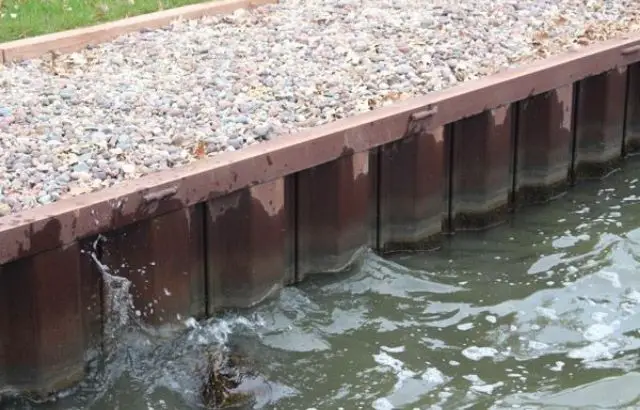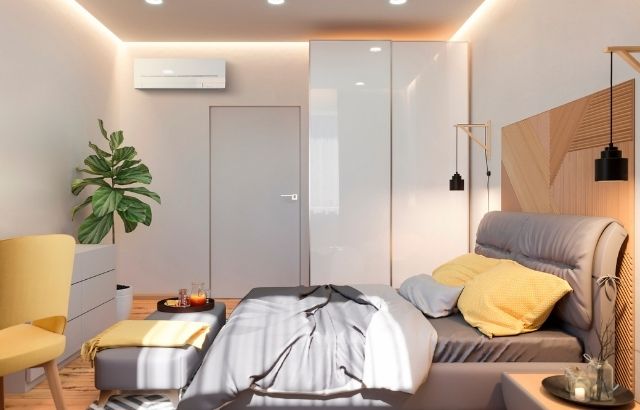As an important part of social and economic development, seawall construction has played an important role in protecting people’s lives and property. The form of the Seawall is the most basic link in the construction of this type of barrier. How to select and optimize Seawall’s cross-section is also a problem that must be faced in the construction process. When you own beachfront property, you know the potential risks that unexpected and often harsh factors on the planet can bring. After getting a property close to the ocean or bay, you must be prepared to deal with the potential danger of flooding or other natural disasters that may cause damage to your house or property. Constructing and maintaining a well-structured seawall can help protect your investment and protect your house from flooding for a long time. In this guide, I will discuss types of seawall construction.
What is a Seawall?
A seawall is a wall or barrier designed to prevent the ocean from invading or eroding your land over time. This is especially important if you have built houses or other structures on your land that may be destroyed by the ocean or bay waters. To protect your investment and protect yourself and your property, gardens, decorative areas, and playgrounds should also be protected by seawalls.
Merits of Harnessing Seawalls
Making use of a seawall on your property is not without its advantages, and you should consider these three main advantages:
Home value: Your Seawall can increase your home and property value, thereby helping it sell at a faster and higher price when preparing to move.
Property protection: Well-built and well-maintained seawalls will help protect your property in the event of natural disasters.
Personal protection: Floods sometimes arise quickly and uncontrollably. By building a seawall close to the house, you can gain valuable time when evacuating and even prevent floods from invading your house.
Types of Seawalls
Erosion of beaches and lakeshores is a serious problem. Various seawalls can prevent damage caused by seasonal changes in water levels, floods, and tidal erosion. Thus, coastal conditions help determine the type of breakwater and the materials used. Mortar stones and reinforced concrete are all used to construct seawalls. These materials can reduce soil erosion and make the water produced by flood or high tide accumulate behind the wall. For inland applications, the combination of rock dumping and coastal vegetation is the preferred method to reduce erosion. So me effective types of seawalls include:
Riprap
Riprap entails diverse types of stones used to protect or armor coastlines or river banks. It is usually a mixture of granite, limestone, and concrete rubble, scattered in blocks along the coast. This revetment is usually used because it allows plant life to grow in the crevices between the surrounding soil and stones. Riprap seawalls are effective because they can dissipate the waves’ force before reaching the soil behind the rocks. Riprap can also be used to reinforce old seawalls by placing them at the bottom of the wall.
Timber seawalls
Timber seawalls can create a gorgeous natural appearance and help prevent soil erosion around a property. However, compared to other seawalls, these seawalls may require more maintenance, especially on coastal properties, where the increase in erosion may be more difficult. How often you must maintain the Timber seawalls depends on your unique environment, the type of materials used, and the weather conditions during the Seawall’s life.
Cobblestone seawall
The cobblestone seawall is a familiar sight along the beaches and banks of the lake. This requires fixing large, round pebbles with mortar at an angle to the water. Cobblestone seawalls are usually placed in less demanding areas where the wave action is not too strong. This revetment is composed of large stones piled on gravel, small stones, and dirt. The stones can be stacked in an open space to allow water to flow through or combined with mortar.
Concrete Seawall
Concrete seawalls may include concrete or other metal reinforcements and are one of the most durable seawall materials. Under the conditions where you are most likely to live near salt water, the expected service life will last fifty years or more, and the concrete Seawall will become hard. The panels used to build the concrete Seawall can be custom designed to reflect the house’s overall appearance or create the appearance you seek. Not only that, the concrete Seawall requires relatively little maintenance. Once installed in place, you can fully enjoy the long-term value-added of the property.
Steel seawall
Steel is economical and strong, making it an excellent material for seawalls. In general, the steel design can withstand various weather conditions, so considering the initial structure and life span, this is a wise choice. But be aware that steel will rust or corrode over time, especially when exposed to saltwater.
Steel supports are mostly harnessed in constructing concrete seawalls, which usually makes them stronger and more effective. It is also essential to note that moving and installing steel may require heavy equipment, making it difficult to move to certain areas, especially ecologically sensitive areas. Therefore, before continuing to use steel, the choice of materials should be carefully evaluated.
Vinyl seawall
The quicker and less expensive installation of seawalls on your property is made possible by the more affordable alternative of vinyl. They provide a strong barrier to waves that can damage your land and save you from losing dirt and rocks all over your property. Additionally, these vinyl seawalls might act as a wind buffer. However, keep in mind that vinyl seawalls only last for roughly 20 years, which will eventually limit how often you may utilize these breakwaters and your property. Regular maintenance and inspection may help them last longer, and having money saved up for replacement can prevent financial surprises when it comes time to replace the seawalls.
Composite Seawall
Composite seawalls may hasten installation but are not as durable as concrete or steel. They are constructed of materials that are already colored and simple to install on your home, so they are more likely to keep their look than other materials over time. The composite Seawall is also perfect for installation in hard-to-reach places or places where the natural environment has to be preserved.
Types of Seawall Construction: FAQs
What are the three types of seawalls?
In addition to the types of seawalls detailed above, there are three main types of seawalls: vertical, curved, and mound. With these three, you can protect any coast from water erosion. 1.
Vertical Seawall
The vertical Seawall is exactly what you think. These walls extend upright into the air like steel or concrete fences. These seawalls are easy to design and construct. They are a reliable way to stop any high-power fluctuations. However, these seawalls bear the brunt. Since they are perpendicular to the water, the waves have no chance to slow down before they hit the wall.
Therefore, these walls will wear out quickly. Also, when water flows down the wall, it may be undercut. Where the waters are calm or the coastline is protected, it is best to use vertical seawalls. In this way, it can withstand the trend without maintenance in just a few years.
Curved Seawall
These structures, also called stepped seawalls, can redirect waves without causing as much disturbance as vertical seawalls. The curved Seawall is designed to conform to the water’s shape, creating a simple curved effect around your house. Compared with vertical seawalls, they can disperse waves’ energy more effectively, but they must be specifically designed for your property.
Stacked Seawalls
The stacked Seawall entails using a piece of rock and concrete armor to protect sloping soil from erosion. This will not necessarily form a wall, but it will slow the waves’ speed before it hits the shore. These seawalls are not suitable for bare or high-energy shores. If the exposure speed is too fast, these seawalls will wear out faster than the first two, leaving a ramp for the waves.
The stacked Seawall is constructed from piles of materials. Usually, these seawalls are temporary. They can be used in emergencies to help protect the coastline or reduce the impact of waves.
The type of Seawall that is best for you may depend on where your property is located. For example, properties on freshwater lakes may work more easily with vertical seawalls. In contrast, owners of waterfront properties may prefer the benefits of curved seawalls to help reduce damage to their property.
What is sea wall construction?
The construction of seawalls refers to the formation of effective barriers to water waves. This usually slows erosion and avoids coastal land depletion caused by the retreat of the coastline.
What is a low sea wall called?
As the name suggests, a low sea wall is the smallest dike constructed to prevent seawater erosion or be used as a breakwater.
Conclusion
In conclusion, seawalls are physical barriers against the waves. They transfer the energy that enters the coast back into the sea. If you wish to use these structures to protect your property, then the highlights of the different types of seawalls above will be indispensable.




